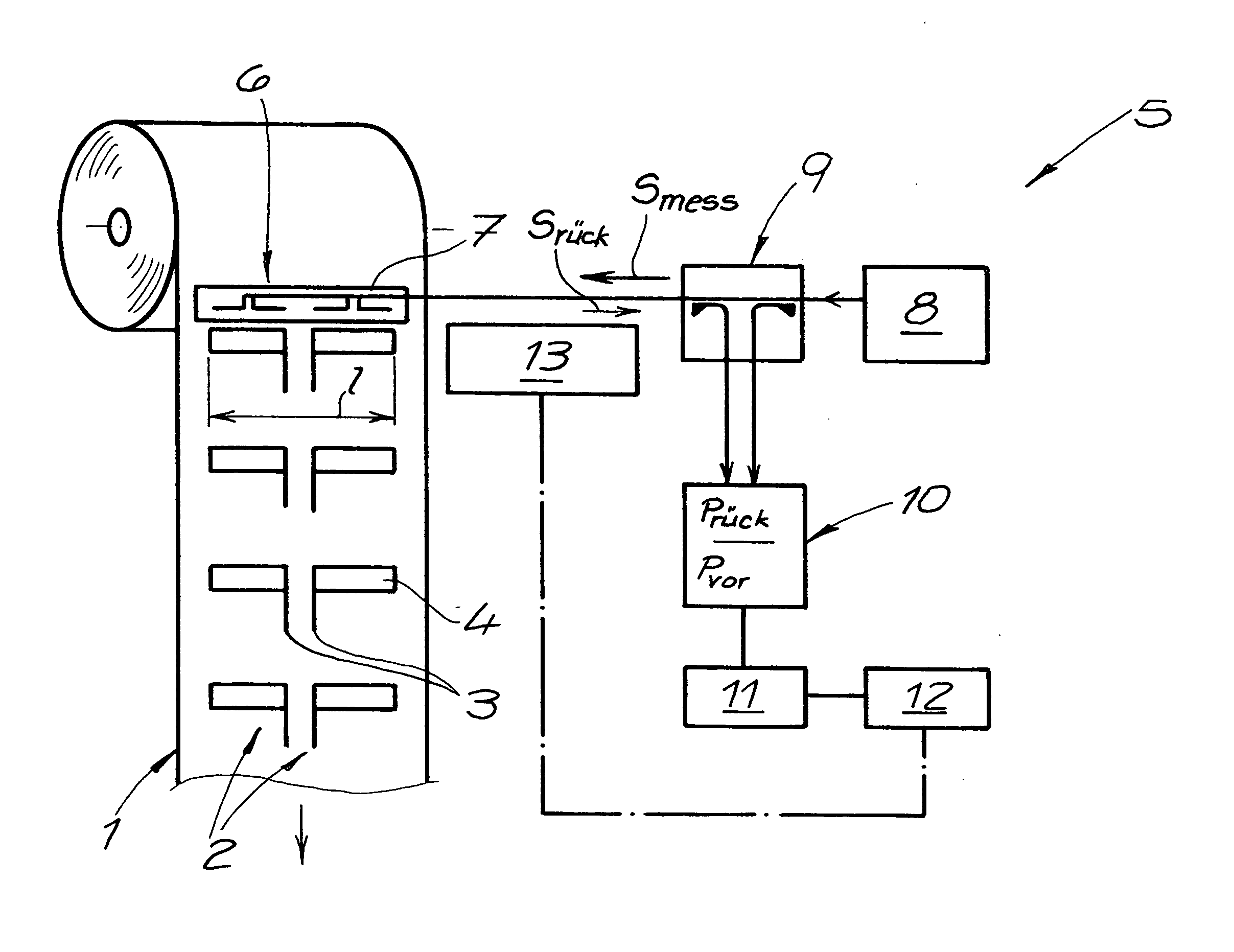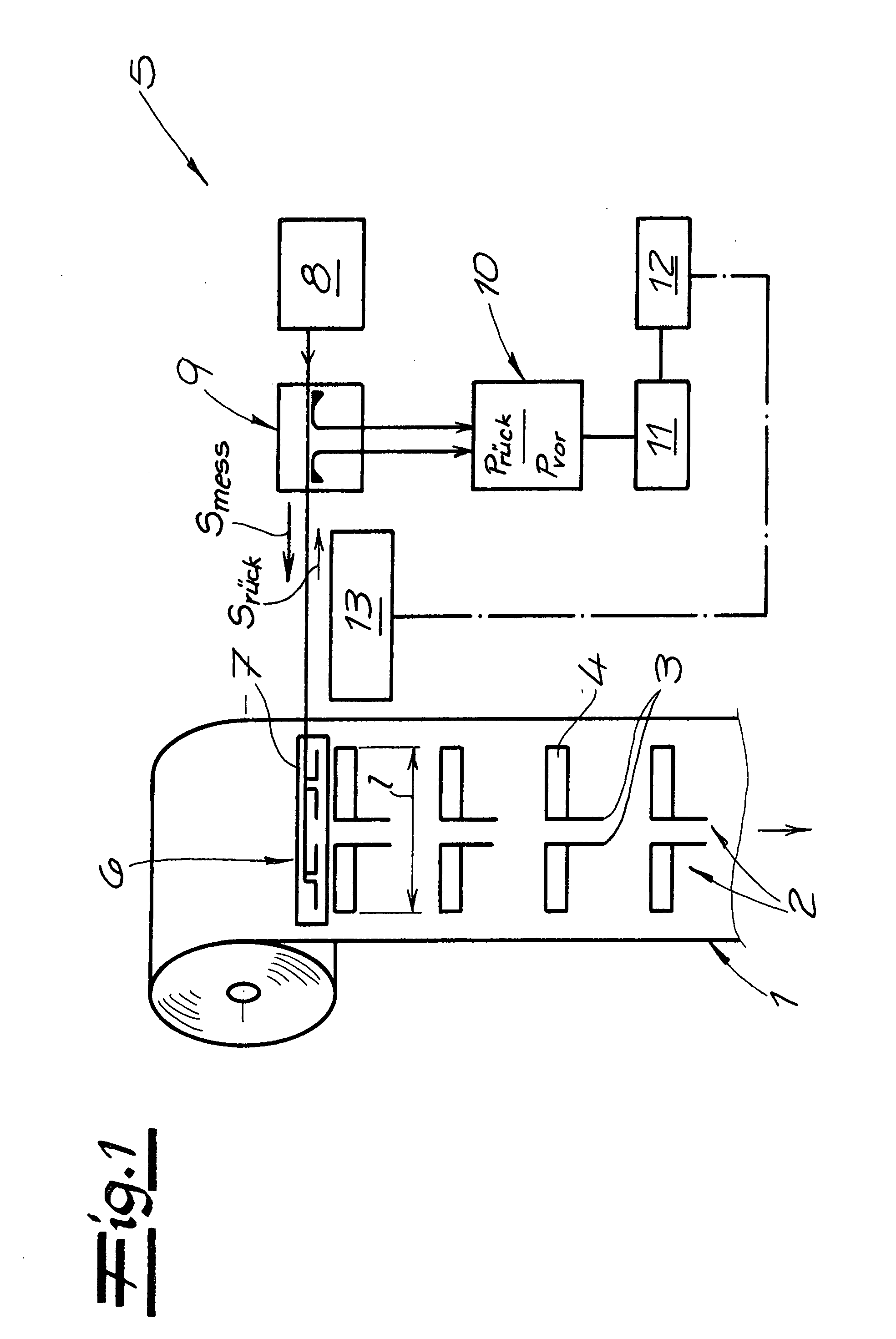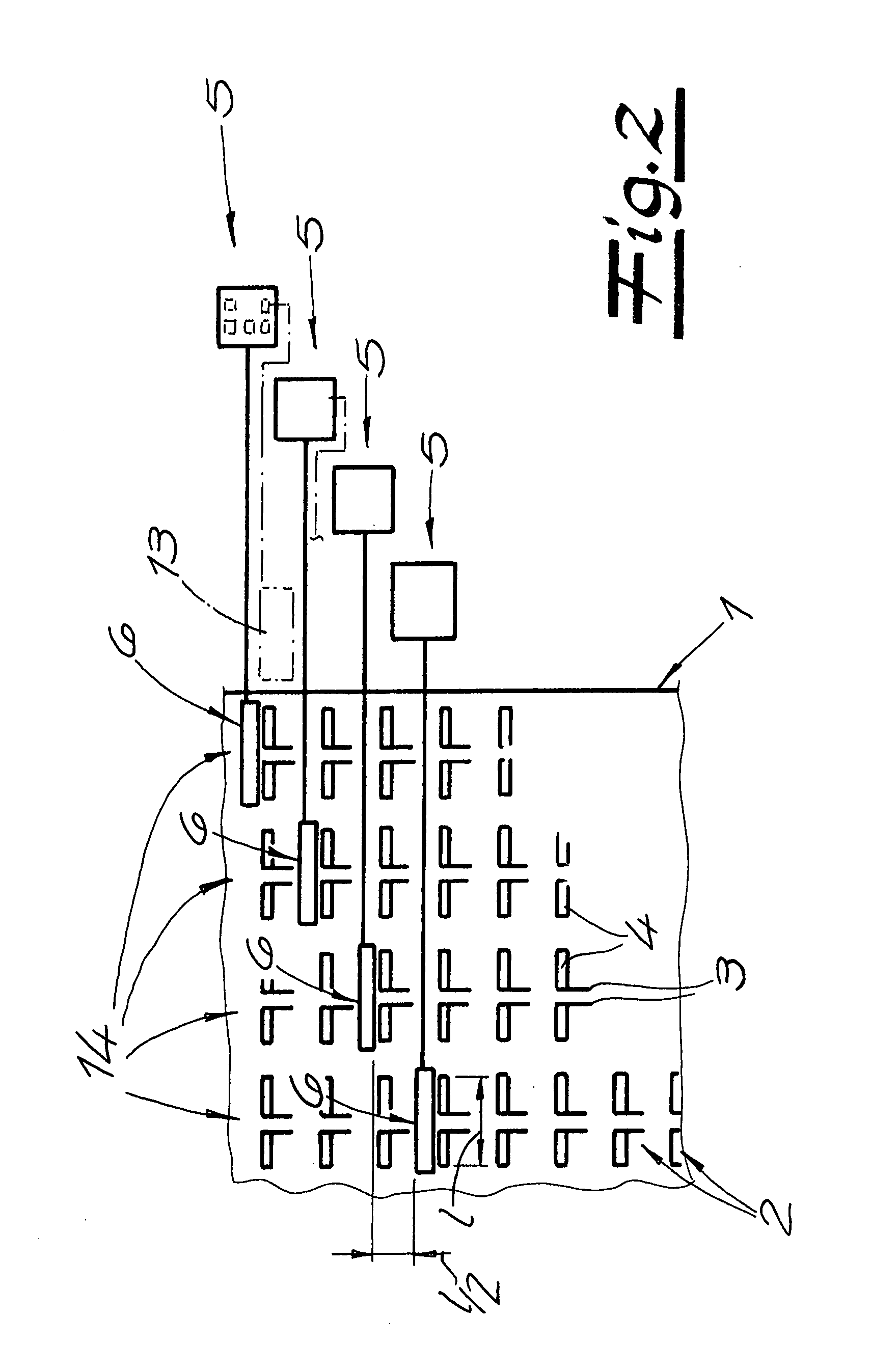Method for contact-free testing of antennas applied to a material web
- Summary
- Abstract
- Description
- Claims
- Application Information
AI Technical Summary
Benefits of technology
Problems solved by technology
Method used
Image
Examples
Embodiment Construction
[0021]Referring now in detail to the drawings and, in particular, FIG. 1 shows a material web 1 having antennas 2 for RFID labels applied to it. Antennas 2 are imprinted onto material web 1, which is configured as a polymer film, as half-wave dipole antennas, using a conductive ink and an intaglio printing process. Antennas 2 have two central connector ends 3, from which a rectangular conductive track 4 extends, in each instance. The working frequency fA, which can lie at 900 MHZ, for example, is pre-determined by the total length l of antennas 2, which corresponds to about half the wavelength. Material web 1 with a plurality of antennas 2 is passed to a measurement device 5, and antennas 2 each are passed past an assigned measurement antenna arrangement 6 of measurement device 5 in the region of measurement device 5. In this connection, measurement antenna arrangement 6 has a separate measurement antenna 7 for each of conductive tracks 4. Measurement antennas 7 have a high-frequenc...
PUM
 Login to view more
Login to view more Abstract
Description
Claims
Application Information
 Login to view more
Login to view more - R&D Engineer
- R&D Manager
- IP Professional
- Industry Leading Data Capabilities
- Powerful AI technology
- Patent DNA Extraction
Browse by: Latest US Patents, China's latest patents, Technical Efficacy Thesaurus, Application Domain, Technology Topic.
© 2024 PatSnap. All rights reserved.Legal|Privacy policy|Modern Slavery Act Transparency Statement|Sitemap



